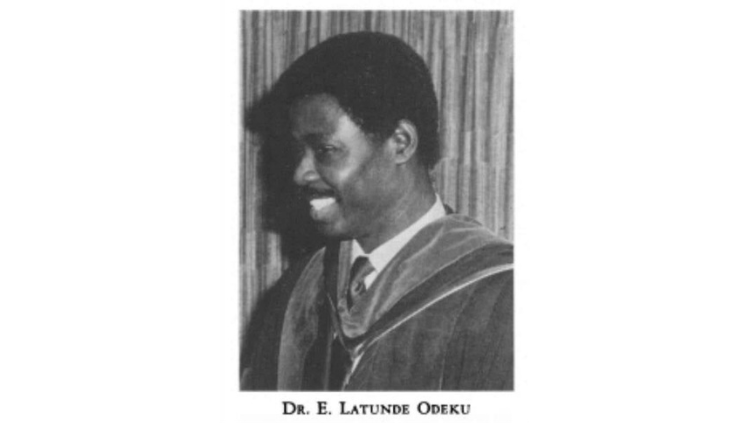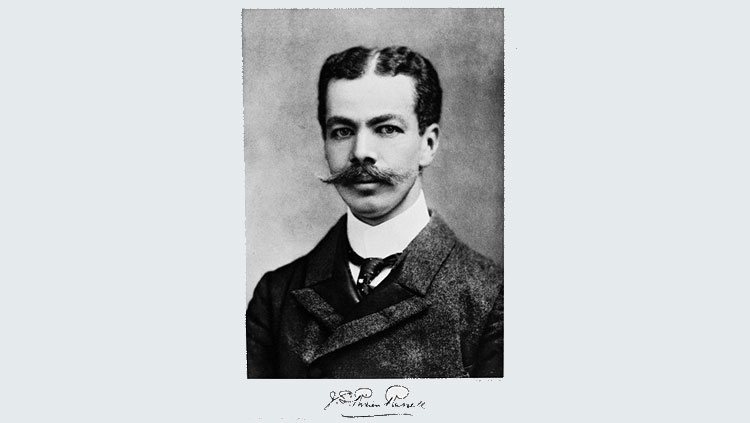Sol Snyder: Daring Creativity in Research
- Published18 Jun 2014
- Reviewed18 Jun 2014
- Author Jennifer Carr
- Source BrainFacts/SfN
Renowned neuroscience researcher Solomon (“Sol”) Snyder always knew that he wanted to be a psychiatrist, but as a young adult he was less than convinced scientific research offered the creative outlet he craved. Being from a musical background, “I had always thought of science as being an uncreative thing,” he explained during a recent interview.
But, when a scientist taking guitar lessons from Snyder invited him to work in a lab at the National Institutes of Health (NIH) the summer before Snyder was to enter medical school, he decided to give research a chance. It only took one summer for Snyder to discover the creative outlet that research provides.
In the 50-plus years since this first discovery, Snyder, now a psychiatrist and professor at Johns Hopkins (in a department that bears his name), has helped to uncover the chemicals behind “the runner’s high,” the role that gasses play in the brain, and more. For these and other groundbreaking contributions, he has received numerous awards, including the Albert Lasker Medical Research Award for Basic Biomedical Research, the National Medal of Science, the United States National Academy of Science Award in Neuroscience, and the Society for Neuroscience’s Ralph Gerard Prize (the Society’s highest recognition for significant contributions to neuroscience throughout one’s career).
Your research has taken you in many fascinating directions — from probing the role of diet in the progression of Huntington’s disease to developing new ways to improve treatments for psychiatric diseases. What unites your research?
We do a lot of different things in our lab, but the underlying theme in all our work is that we’re interested in understanding the signals that cells in the brain use to communicate.
The main signals cells use are called neurotransmitters. Neurotransmitters are released by one nerve cell and affect other nerves by binding to their receptors (proteins on the surface of the cells). When neurotransmitters bind to the cell’s receptors, information is communicated to the inside of the cell, where it changes the way the cell functions.
There are lots of signals other than neurotransmitters as well. We’re interested in figuring out what they do.
How is your lab different from those where the focus is on a single area of research?
My attitude has always been science should be fun and creative, and you make discoveries by looking for things that nobody ever saw before. By definition, that means you can’t look at the same old thing. New things come up and you get new ideas, and they may be far out and risky. So the odds of experimental efforts being successful aren’t all that great, but the pay-off of making a great, new discovery is considerable.
If you look at the track record of all of the great scientists, what characterizes them is that they took risks. They went out into the unknown because they felt like it.
You are famous for your discovery that brain cells have opiate receptors, which led to the discovery of endorphins (the morphine-like substances naturally released during exercise). How did this come about?
In the early 1970s, heroin addiction was a big national concern. The percentage of the soldiers in Vietnam that were addicted to heroin was enormous, and heroin addiction was rampant in big cities in the United States. There was a national priority to understand heroin addiction, which included available money for research.
At that time, nobody knew how opiates did anything. We determined that the first step was that opiates have to bind to a receptor. Once we were able to locate the opiate receptors on cells, we learned that opiate receptors are just receptors for normally occurring morphine-like neurotransmitters that are produced by the brain.
We used the same approach we took with opiate receptors to find receptors for other neurotransmitters as well. Since all of the major drugs that influence the brain act via neurotransmitter receptors, we were able to determine the actions of many important drugs, particularly the major antipsychotic drugs.
What are you working on now?
In the last few years, our lab has been particularly interested in gasses as major messenger molecules in the body. About 20 years ago, we discovered that brain cells use the gas nitric oxide to communicate. They also use carbon monoxide to signal to each other. Our recent studies have focused on hydrogen sulfide, which is the molecule that makes things smell bad (like rotten eggs). Hydrogen sulfide is a very important messenger molecule throughout the body. We’re studying what it does, how it’s made, and exploring the ways we might be able to regulate this molecule.
How has science evolved since your earliest days at NIH?
One thing that’s different today than when I started out is the availability of research funding. When I started out, if you were pretty good and well trained and you started a new faculty position, you sent a grant application to the NIH and you were pretty confident that it would be funded. For the majority of people from good places, there was very little risk of not being funded; it would be surprising if you didn’t get funded. Now, of course, it’s a surprising thing if well-qualified scientists do get funded. That’s a big difference.
Scientists can also address bigger questions and get fundamental insights more readily today than they could years ago thanks to advances in molecular biology tools.
What excites you most about the field of neuroscience today?
What I find most exciting is the possibility of getting closer to knowing the exact molecular underpinnings of the major brain diseases (schizophrenia, affective disorders, and anxiety).
While I’m interested in just the basics of how the brain works, my strongest interest as a psychiatrist is in diseases and ultimately how to treat them. If we can understand how the drugs we have presently work, we can develop better drugs. These drugs can also be used as probes to get at basic insights into brain function.
If there was one message you would like to communicate about neuroscience to the public what would that be?
Our ability to understand how the brain functions normally, our ability to understand what goes wrong in disease, and our ability to find better treatments is greater today than at any other time in history. The advances are increasing at an ever-accelerating pace. We live in great times. Paying attention to what’s happening in neuroscience will bear fruit.
CONTENT PROVIDED BY
BrainFacts/SfN
References
Also In Meet the Researcher
Trending
Popular articles on BrainFacts.org


















